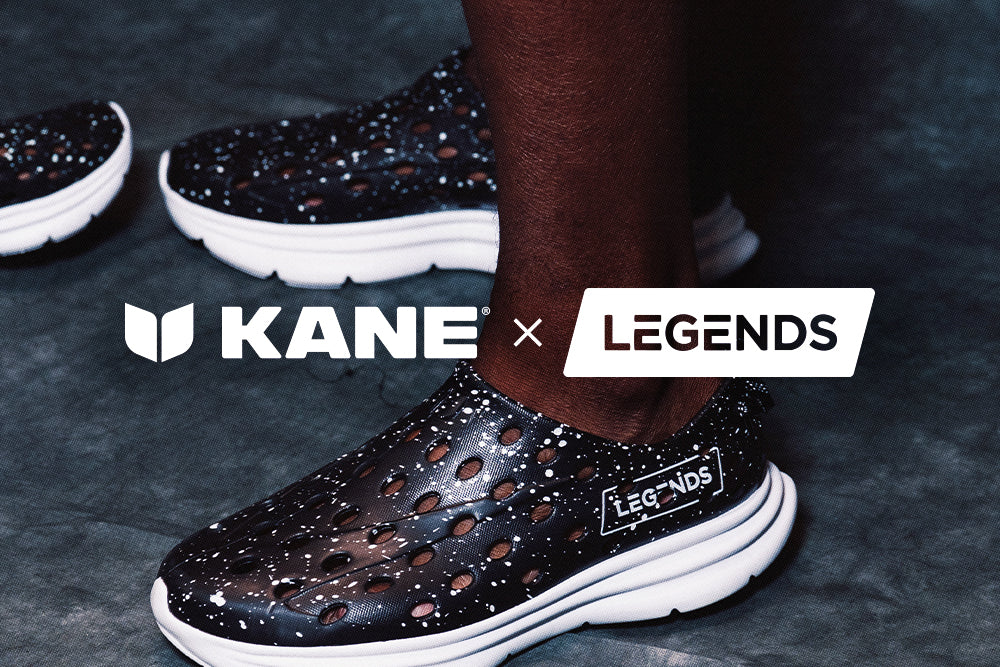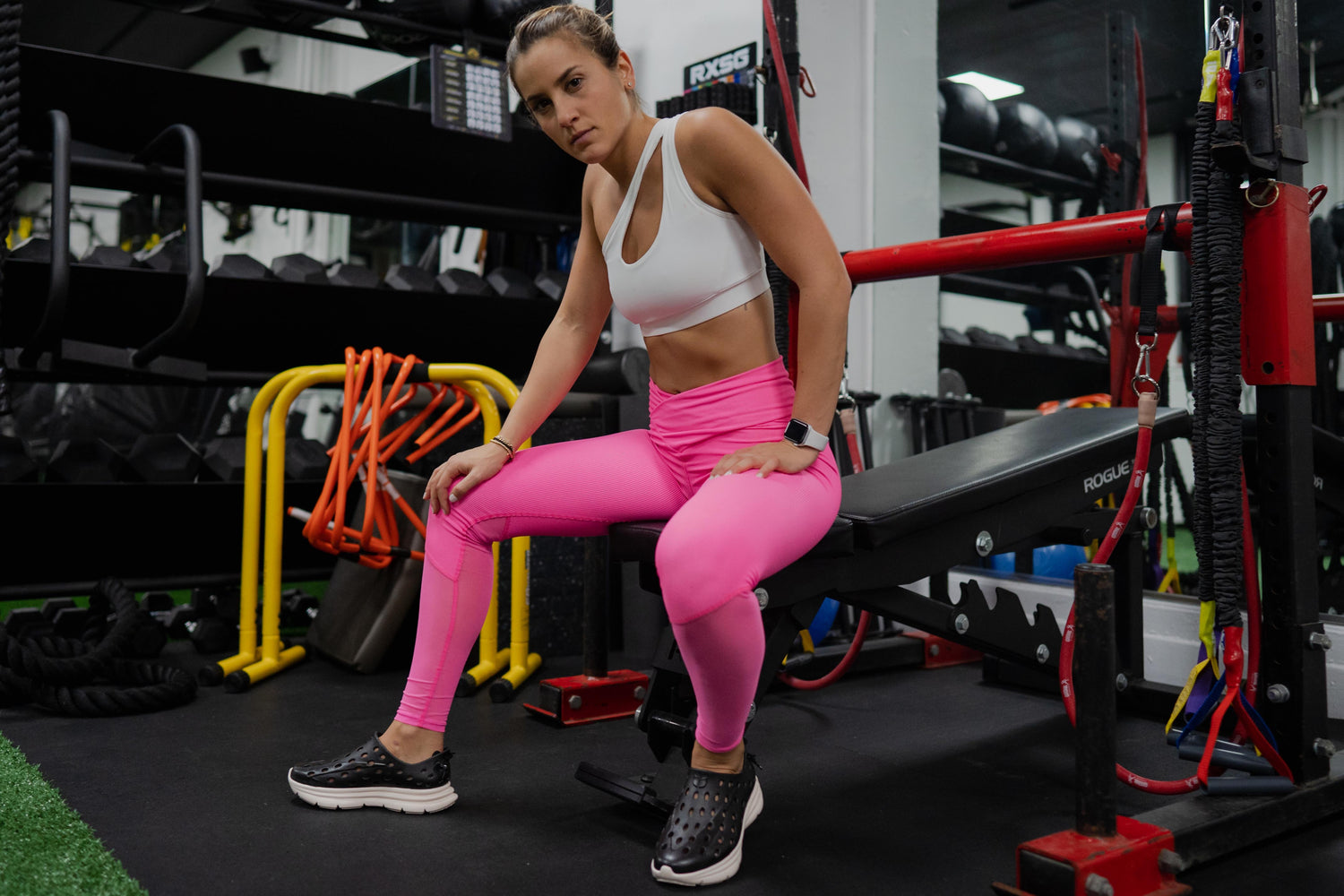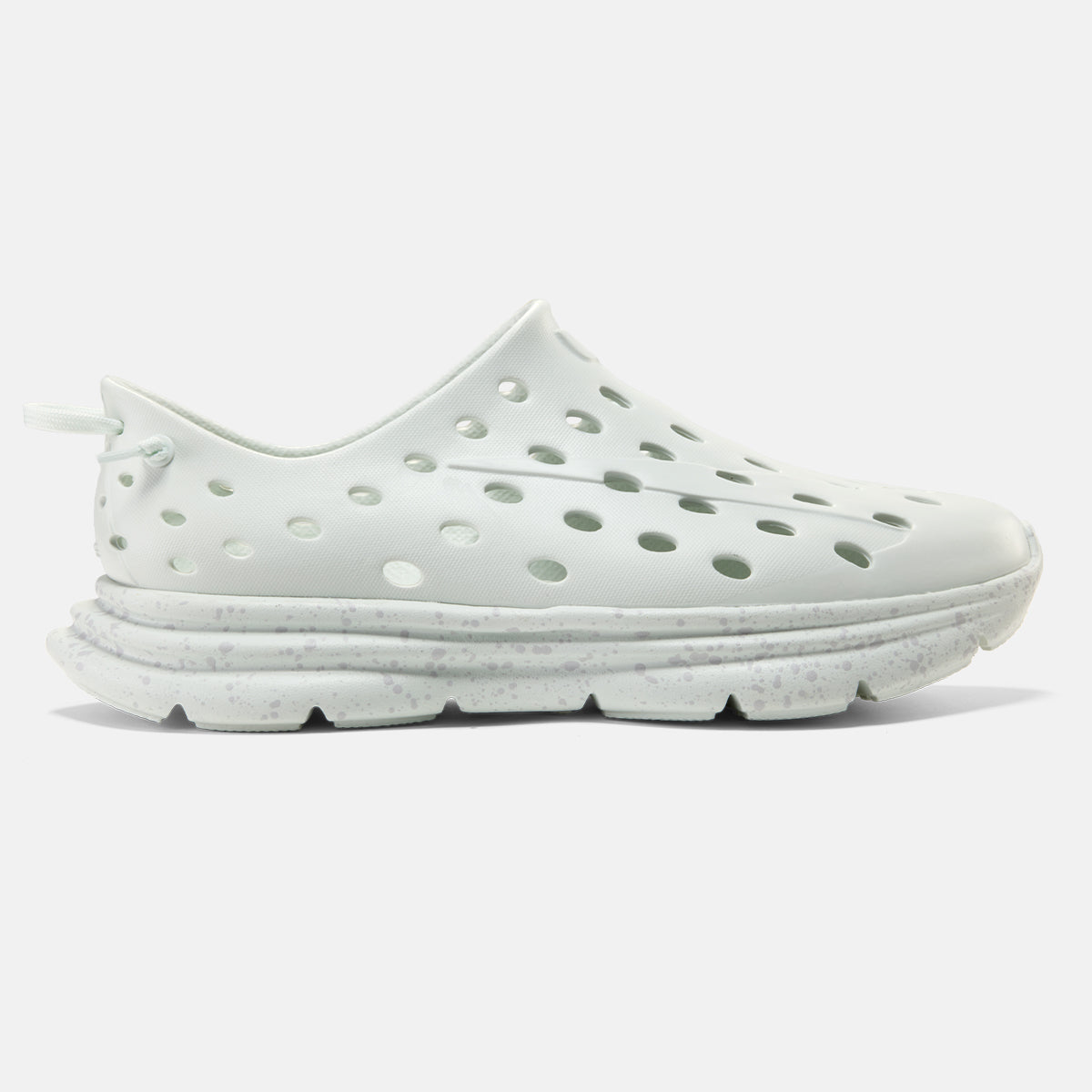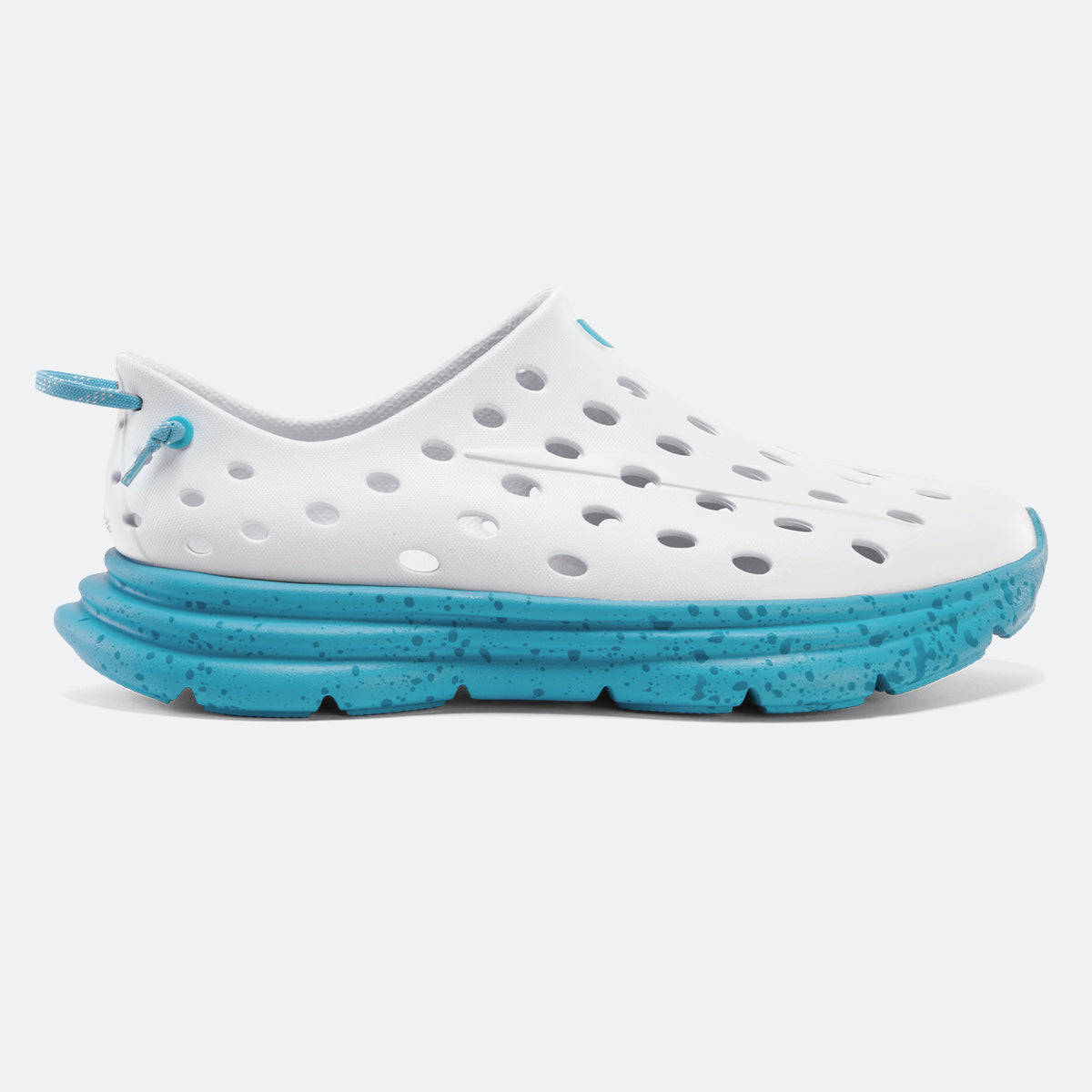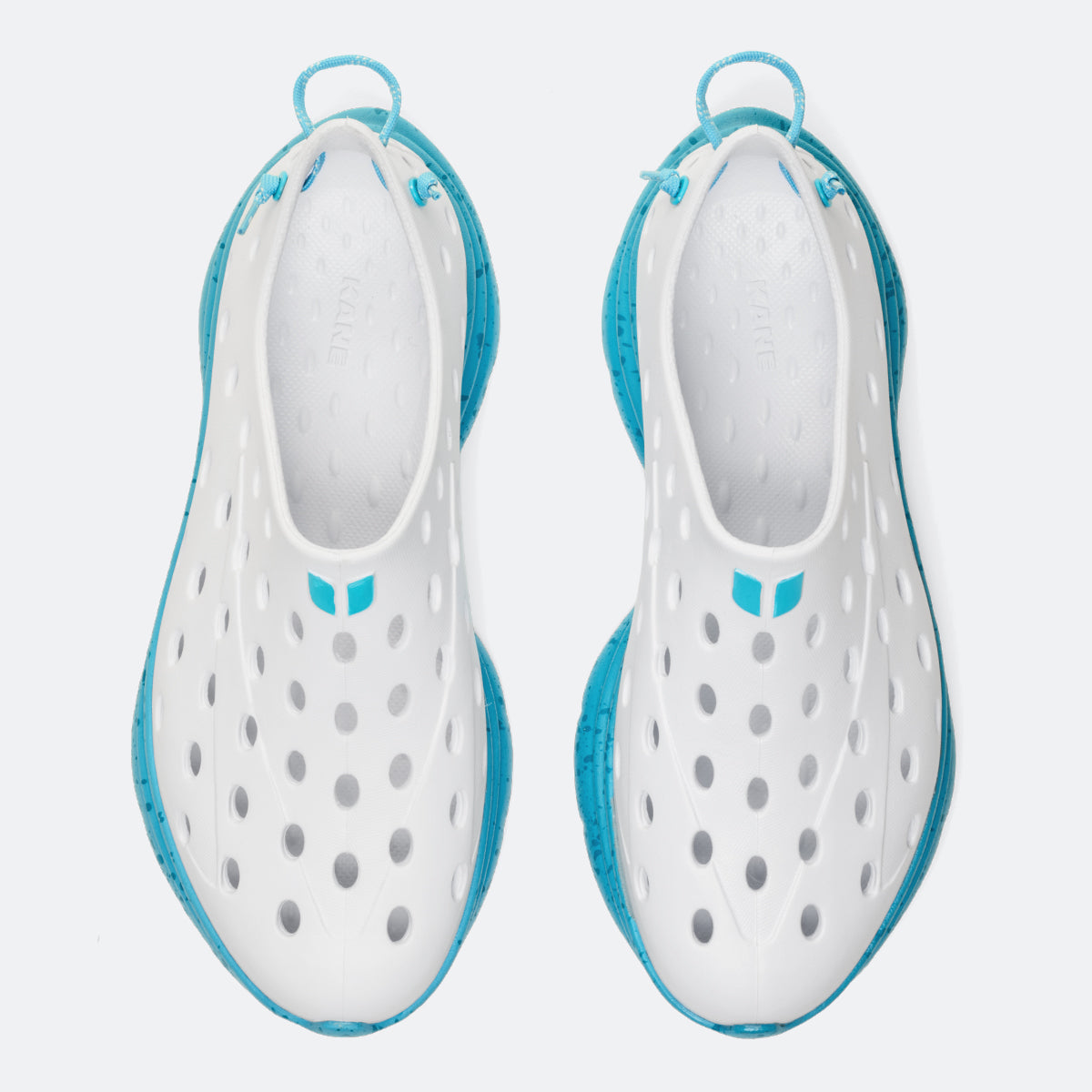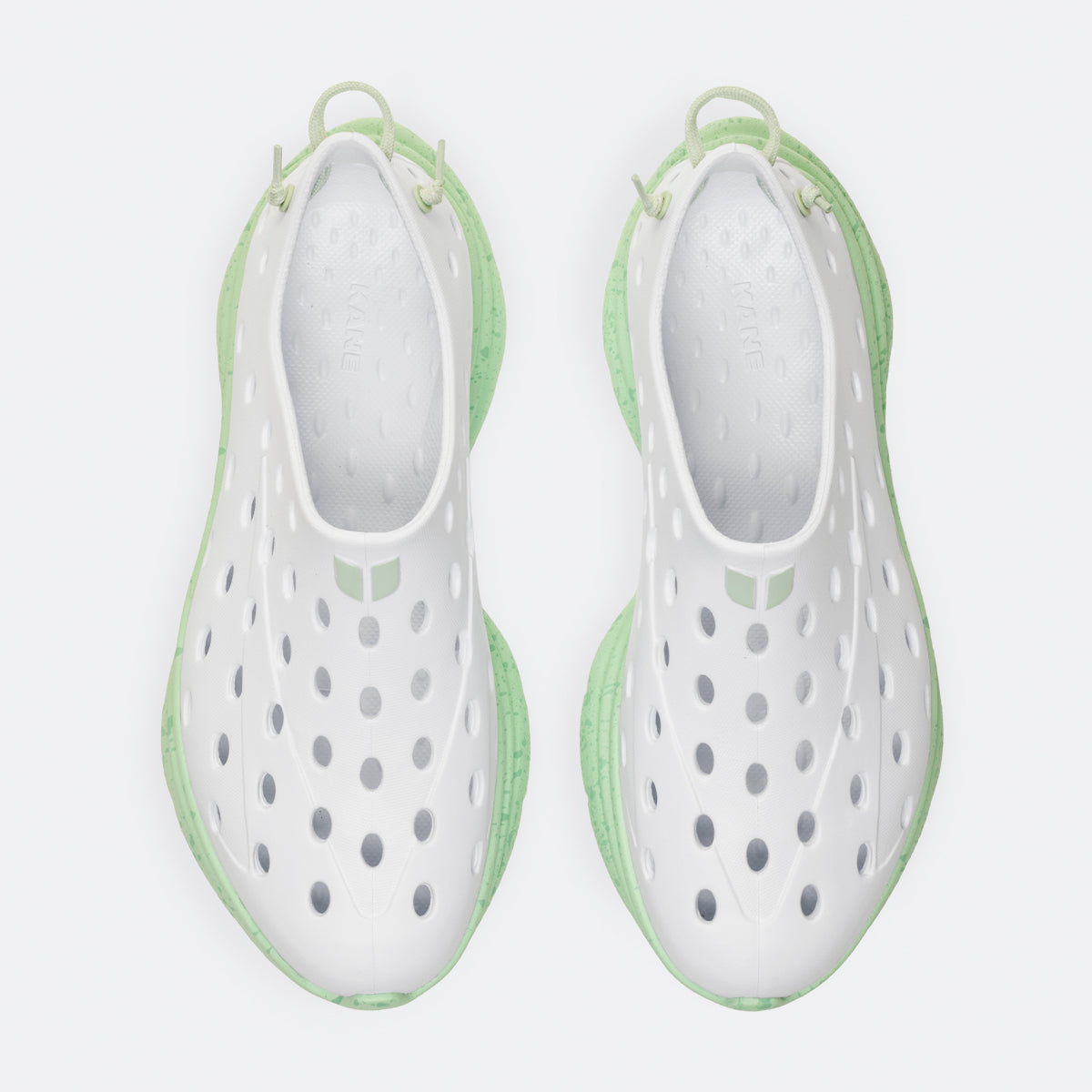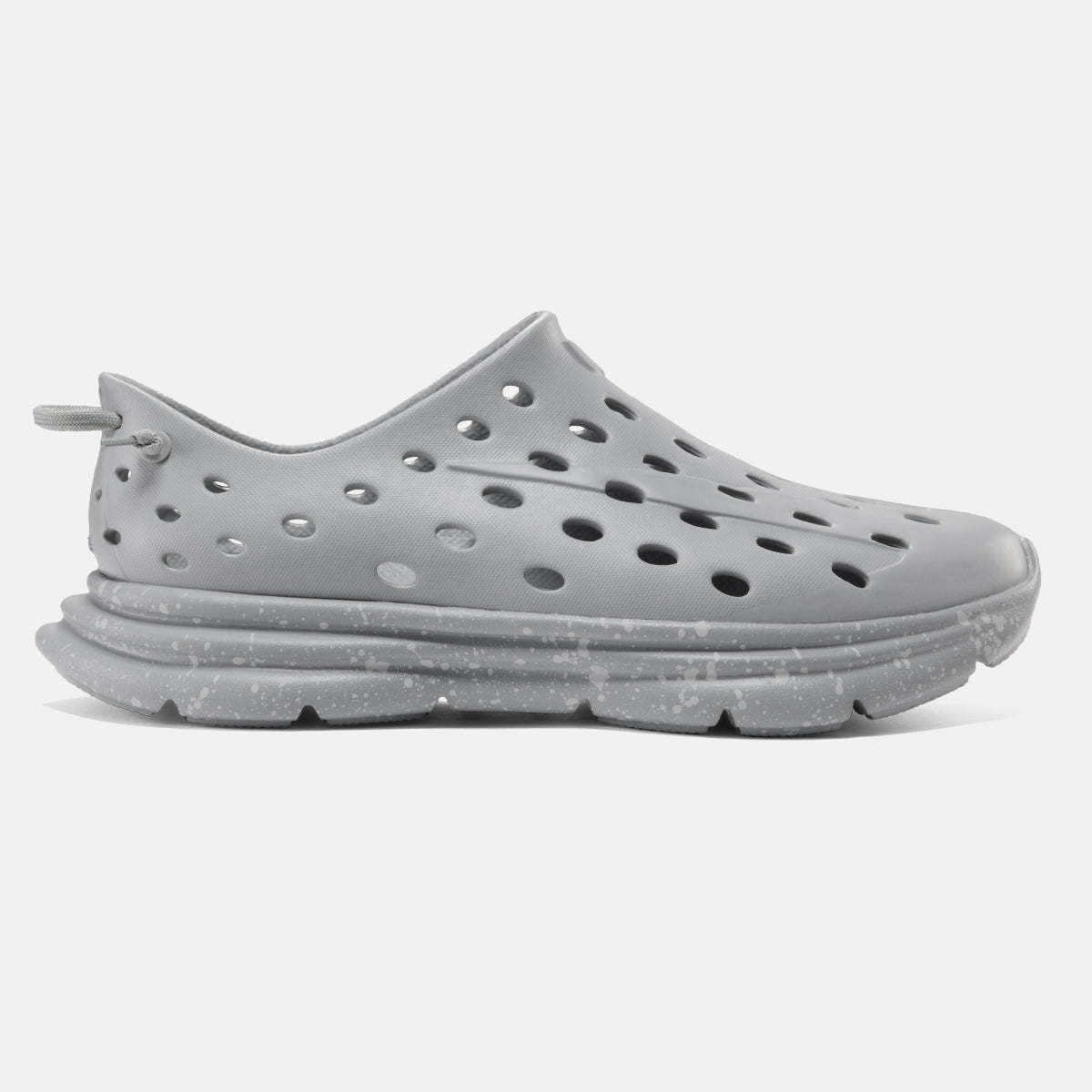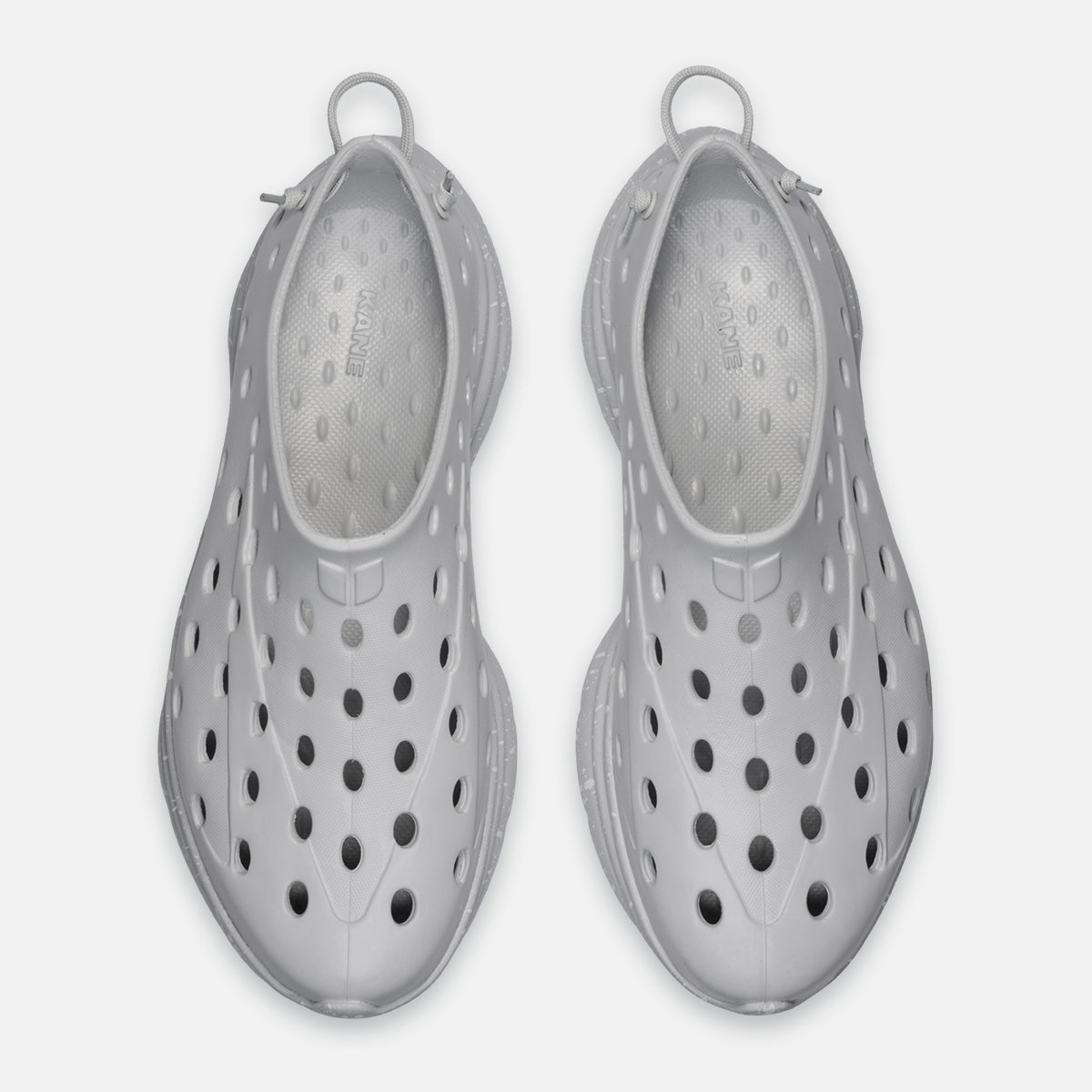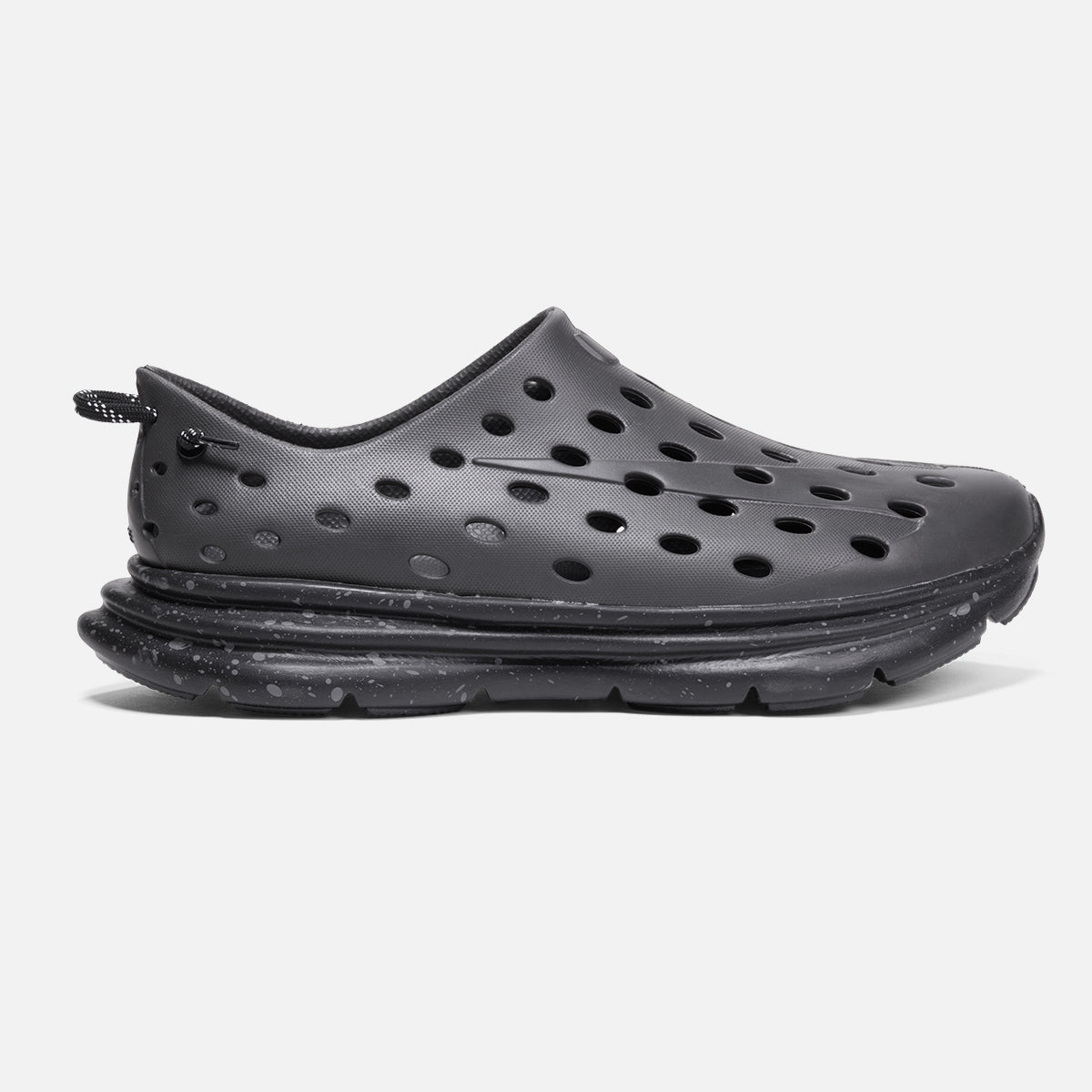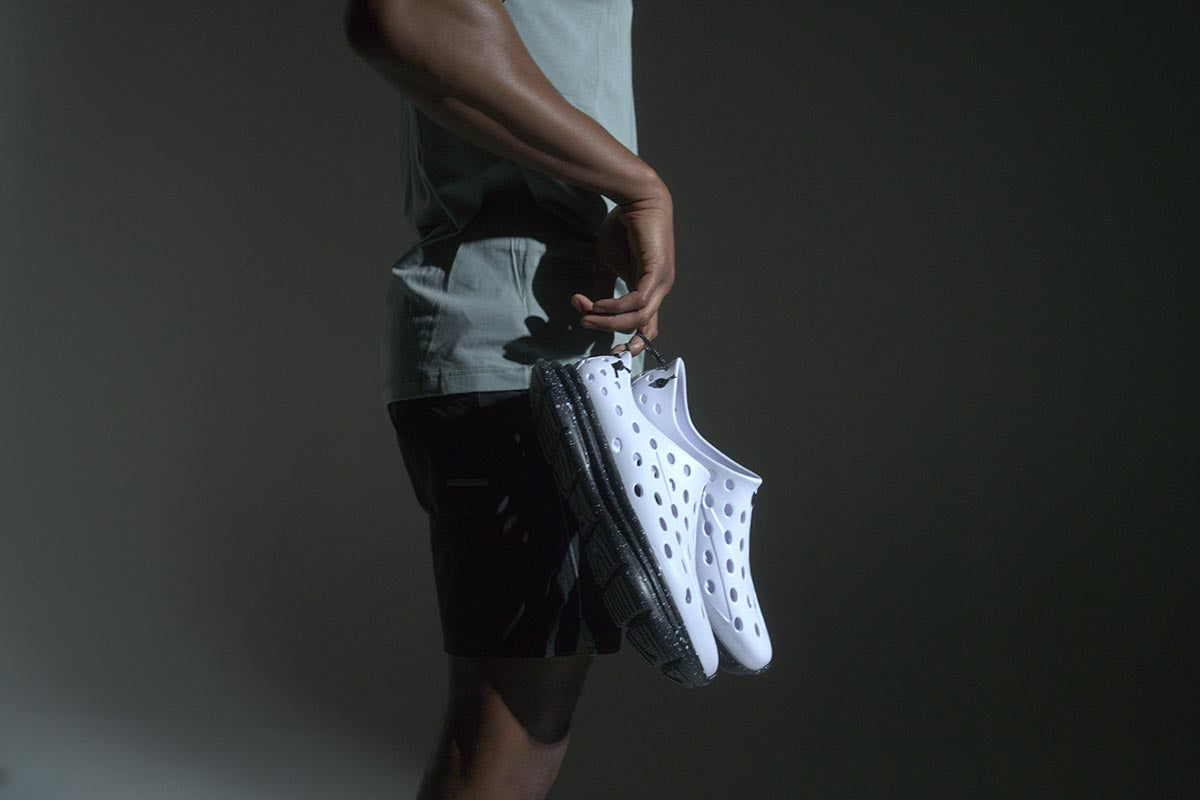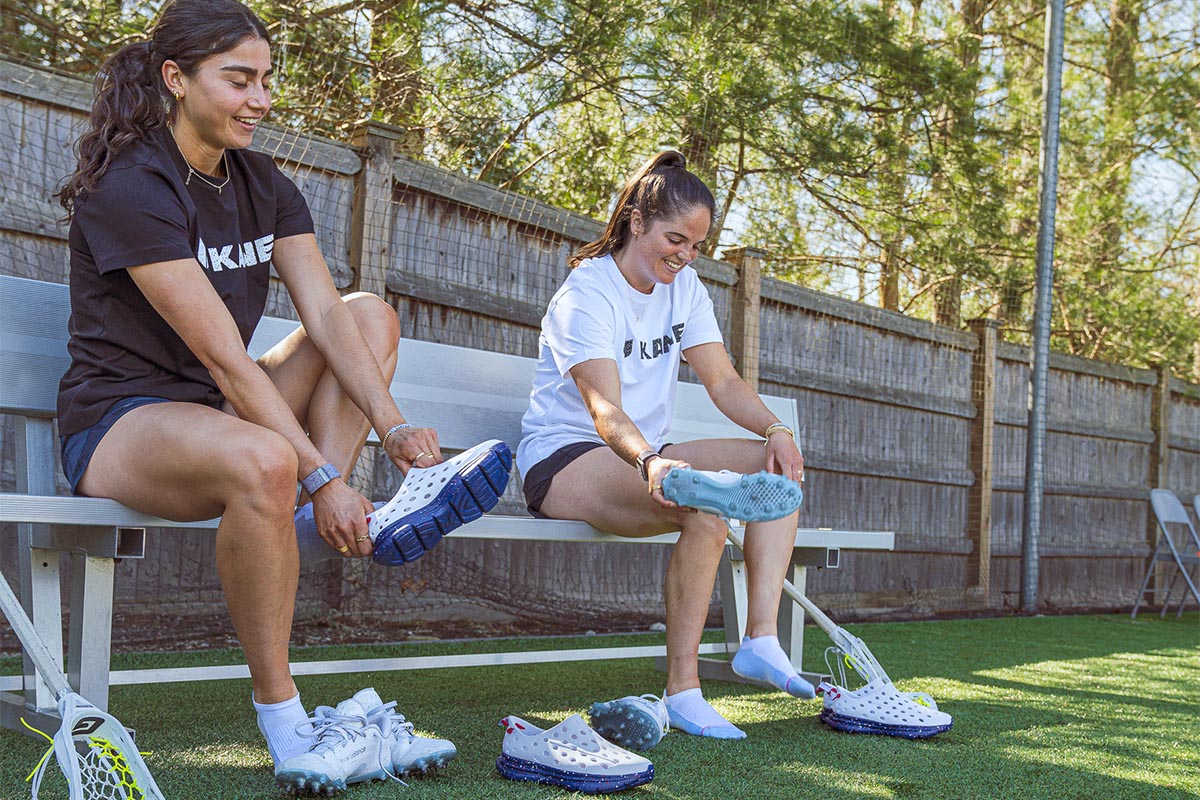Safety and comfort are often top priorities when choosing the perfect pair of shoes, especially in environments prone to slippery surfaces. People usually assume that rubber-soled shoes are inherently non-slip, but is this true?
From the type of rubber and tread pattern to surface conditions and wear, we'll uncover why not all soles are created equal and what to look for when selecting a new pair of shoes that offer reliable grip and stability.
Whether you’re navigating wet sidewalks, working long hours in a busy kitchen, or simply looking for everyday footwear with added traction, understanding the nuances of rubber soles will help you make informed decisions for your safety and comfort.
Do rubber soles equal slip-resistant shoes?
The short answer? No, not all rubber sole shoes are inherently non-slip or slip-resistant. While rubber generally provides better traction than other materials, several factors determine a shoe's slip resistance. The next time you purchase shoes, consider the following features:
Tread pattern
The tread pattern and texture of the rubber outsole play a crucial role. Shoes with deeper grooves, lugs, or specialized tread designs like hexagonal patterns are more slip-resistant as they increase surface contact and allow liquids to disperse. Flat, smooth soles without tread can still be slippery on certain surfaces.
Rubber compound
The specific rubber compound used in the outsole affects the grip. Softer rubber compounds tend to provide better traction, especially on wet or oily surfaces, as they can better conform to surface irregularities. Harder rubber may grip less effectively.
Sole design
Check the design of the soles. Soles with a slight outward rounding at the edges help prevent hydroplaning by allowing liquids to escape. Completely flat soles can trap liquids underneath, increasing slip risk.
So, while rubber is generally grippier than other options, simply having a rubber outsole does not automatically make a shoe non-slip or slip-resistant.
Wearing shoes explicitly marketed as "non-slip" or "slip-resistant" have outsoles engineered with specialized treads, rubber compounds, and sole designs to maximize traction on slick surfaces. Regular shoes like casual shoes or dress shoes with rubber bottoms may not provide the same level of slip resistance.
5 features that define slip-resistant shoes
Non-slip shoes, also known as slip-resistant or anti-slip shoes or footwear, are specifically designed to provide excellent grip on various terrains. Makers engineer the outsoles of these specialized shoes to provide superior traction on slick surfaces.
Healthcare workers, construction workers, food service workers in most restaurants and employees in many other industries wear non-slip shoes to maintain balance and prevent slips.
Non-slip shoes typically have outsoles made of rubber or other high-friction materials with tread patterns or grooves that increase surface area contact and prevent slipping. They are designed to reduce the risk of slips, trips, and falls, thus enhancing workplace safety and preventing accidents.
These are the five key features that define non-slip shoes:
1. Rubber or synthetic soles
Non-slip soles can be made from rubber, polyurethane, EVA (ethylene vinyl acetate), or synthetic tread material that provides better grip and traction than most shoes on slick surfaces.
2. Specialized treads
Non-slip shoe soles have distinct tread patterns, often with small hexagons, circles, or other shapes that create deep grooves designed to channel liquids away and prevent slips.
3. Thick, durable construction
Non-slip shoes have thicker, sturdier soles that provide cushioning and support for long periods of standing or walking.
4. Water-resistant materials
The uppers of non-slip shoes are often made from water-resistant or waterproof materials like leather or synthetic fabrics to protect the foot in wet conditions.
5. Slip-resistant labeling
Shoes marketed as "non-slip," "slip-resistant," or "anti-slip" have been designed and tested for slip resistance on wet and oily floors.
6 types of non-slip shoes
Non-slip shoes come in various styles tailored for different environments and activities. Six common types are:
1. Work shoes
Slip-resistant work shoes are typically crafted with durability and safety in mind. They often feature reinforced toe caps and supportive midsoles to protect against workplace hazards. Non-slip work shoes come in various styles, including oxfords, loafers, and lace-up boots, and are suitable for different job roles and environments.
Makers design this type of safety footwear to be comfortable during long hours of wear. It often incorporates cushioned insoles, excellent arch support, and breathable materials to keep feet cozy and dry during extended shifts for construction workers and others who spend time on their feet.
2. Chef clogs
Chef clogs are specifically tailored to meet the demands of kitchen environments where spills, slick floors, and wet or oily surfaces are common occurrences. These shoes are typically made from synthetic materials or EVA foam, which are resistant to water and oil.
They often feature closed-back designs and adjustable straps for a secure fit, ensuring stability while maneuvering through crowded kitchens. Chef clogs are easy to clean, with smooth surfaces and removable insoles that can be washed or replaced.
3. Athletic sneakers
Non-slip athletic sneakers are engineered to provide traction and support for various physical activities. They feature specialized anti-slip outsoles with multidirectional treads or patterns designed to enhance grip on different surfaces, including asphalt, trails, and gym floors.
These sneakers prioritize performance and comfort, with features such as breathable mesh uppers, responsive cushioning, and supportive midsoles. They come in various styles and designs to cater to specific sports or training needs, ensuring that wearers can focus on their activities without worrying about slipping or sliding.
4. Server shoes
Server shoes are designed to withstand the demands of fast-paced restaurant environments while providing slip-resistant traction. They often feature low-profile designs with non-marking outsoles to prevent scuffing and reduce slips.
These shoes are lightweight and flexible for agility and ease of movement, allowing food service workers to navigate crowded dining areas and potentially oily kitchen floors confidently. They may also incorporate moisture-wicking linings and padded collars for additional foot protection during long shifts, preventing fall accidents and ankle sprains.
5. Safety shoes
Safety boots and shoes featuring non-slip footwear soles are essential for construction, manufacturing, and logistics workers. These boots are constructed with durable materials such as leather or synthetic textiles and reinforced with steel or composite toe caps for protection against impact and compression hazards.
This type of protective footwear features rugged outsole patterns with deep treads for maximum traction on uneven terrain and slippery floors. Safety boots prioritize stability and support, often incorporating ankle padding, arch support, and shock-absorbing midsoles to reduce fatigue and minimize the risk of musculoskeletal injuries caused by slip hazards.
6. Outdoor sandals
Non-slip outdoor sandals are designed for adventurers who enjoy hiking, trekking, or water activities in rough environments. These sandals feature durable straps, adjustable closures for a secure fit, and molded footbeds for arch support and cushioning.
Outdoor sandals are constructed with quick-drying materials such as neoprene, nylon, or synthetic leather that are resistant to water and abrasion. They provide traction and grip on wet or slippery surfaces, with rugged outsoles featuring pronounced lug patterns or high-grade rubber compounds for superior traction on trails, rocks, riverbeds, and other slick terrain, helping to prevent common injuries in the great outdoors.
A non-slip pair of sandals offers breathability and ventilation to keep feet cool and comfortable during warm-weather adventures, making them a versatile choice for outdoor enthusiasts.
Discover Kane Recovery Shoes!
Kane Revive Active Recovery Shoe, and you’ll never turn back. Designed for breathability and offering the perfect balance of support and cushion, these shoes provide the comfort you deserve.
Kane's recovery shoes provide excellent support, comfort, and durability for those needing top-notch recuperative footwear. Featuring an adjustable hook-and-loop single-strap synthetic upper, plush TPR footbed, and durable injected EVA outsole, these kicks come with all the right features to assist you during your rehabilitation journey.
Aside from providing quality products, they are also committed to sustainability, having made plans to become a B Corp while dedicating 1% of their overall profits towards environmental charities.
When and how to wear Kane Revive
The best moment to wear most recovery shoes is directly after a strenuous activity such as running or exercising. This helps minimize inflammation and launch the healing process. To guarantee maximum comfort and effective recuperation, make sure that you are wearing your recovery footwear correctly by tying up laces securely for a snug fit.
Frequently asked questions
When should you wear non-slip shoes?
Wear non-slip shoes whenever you anticipate encountering slippery surfaces, such as wet floors, oily environments, or uneven terrain. They provide traction and stability, reducing the risk of slips, trips, and falls, making them ideal for workplaces, kitchens, outdoor activities, and any situation where safety is a concern.
Are rubber soles non-slip?
Rubber soles are a popular choice for non-slip or slip-resistant shoes. However, not all rubber-soled shoes are non-slip. The key reasons why rubber soles provide good traction and slip resistance are:
- Rubber is a naturally grippy material with a high coefficient of friction, allowing it to grip surfaces firmly
- Rubber outsoles often have interlocked tread patterns or a bumpy texture that increases surface area contact and channels away liquids, preventing hydroplaning
- Rubber's soft and pliable nature allows the outsole to conform to surface irregularities, maximizing contact points
- Rubber maintains its slip-resistant properties even when wet, unlike other materials that become slippery when moisture is present
So, rubber's inherent grip, textured tread designs, and ability to maintain traction on wet surfaces make rubber outsoles an excellent choice for non-slip or slip-resistant footwear used in various industries like food service, healthcare, construction, and more. The slip-resistant properties help prevent workplace accidents and injuries caused by slips and falls on slick floors or terrain.
What material is best for non-slip shoes?
Many shoemakers consider rubber, particularly high-quality compounds with aggressive treads, ideal for maximizing traction and slip resistance in shoe outsoles across various industries and outdoor activities.
The inherent properties of rubber that make it ideal for non-slip shoes include:
- High coefficient of friction, allowing the rubber to grasp surfaces firmly
- It can maintain traction even when wet, unlike some other sole materials that become slippery when moisture is present
- Its soft and pliable nature allows the outsole to conform to surface irregularities for maximized contact points and grip
The best non-slip work shoes typically have outsoles made of high-grade rubber or synthetic rubber compounds. Softer rubber compounds tend to provide more traction and reduce slips, especially on wet or oily surfaces.
Additionally, the tread pattern and texture of the rubber outsole play a crucial role. Deeper grooves, lugs, or specialized tread designs like hexagonal patterns increase surface contact area and allow liquids to disperse, enhancing slip resistance.
What are some other material options for a slip-resistant shoe?
While many shoemakers favor rubber, other slip-resistant materials for shoe outsoles include neoprene, high-quality synthetics, polyurethane, EVA, and synthetic rubber compounds. The key factors are the shoe grip, softness to conform to uneven surfaces, and ability to channel away liquids.
How do you know if you're wearing slip-resistant shoes?
First, examine the outsole material to determine whether a shoe is non-slip. Rubber or similar high-traction materials grasp surfaces securely, especially in wet or oily conditions. Look for shoes with deep patterns or multidirectional designs that help disperse water or oil.
Some shoes may also bear an ASTM F2913-11 rating, indicating compliance with slip resistance standards. Additionally, consider any coatings or treatments applied to the shoes to improve slip resistance, although these may wear off over time.
Test the shoes on a similar surface to evaluate their slip resistance firsthand. Consult online reviews and ask colleagues in relevant industries for recommendations.
Lastly, ensure the shoes comply with any industry-specific regulations or standards. By assessing these factors, you can confidently determine whether a shoe is non-slip.
What makes a shoe slip-resistant?
A non-slip shoe has rubber/synthetic soles, specialized treads, thick construction, and water-resistant materials that make it suitable for wet, oily, or slippery environments.


